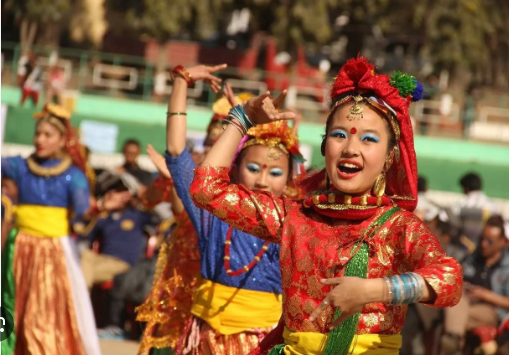5 Spectacular Folk Dances of Sikkim: A Glimpse into the State’s Cultural Tapestry
folk dance of sikkim Sikkim, nestled in the lap of the Himalayas, is not only known for its breathtaking landscapes but also for its rich and diverse cultural heritage. One of the most captivating aspects of Sikkim’s culture is its traditional folk dances. In this article, we will take you on a journey to discover the spectacular folk dances of Sikkim, shedding light on their significance and the cultural vibrancy they bring to this beautiful state.
The Rich Cultural Diversity of Sikkim
Sikkim is a melting pot of cultures, with a mosaic of ethnic communities residing in this small yet culturally vibrant state. Each community has its own unique dances that are an integral part of their identity and heritage. Here are five spectacular folk dances that showcase the diversity of Sikkim’s culture:
Chaam Dance: The Sacred Masked Dance
The Chaam dance, also known as the Mask Dance, is a prominent feature of Sikkim’s Buddhist culture. It is performed during religious festivals, especially in monasteries like Rumtek and Pemayangtse. The dancers wear vibrant costumes and intricately crafted masks representing various deities and demons. The Chaam dance narrates stories from Buddhist mythology and is believed to bring blessings and ward off evil spirits.
Maruni Dance: A Joyful Celebration
The Maruni dance is a traditional Nepali dance that is popular during festivals like Dashain and Tihar. It is characterised by graceful movements and vibrant costumes. Maruni dancers, usually young girls, wear colourful dresses and adorn themselves with traditional jewellery. The dance is a joyful celebration of life, love, and the Nepali culture.
Tamang Selo: The Rhythmic Celebration
The Tamang Selo is a lively folk dance performed by the Tamang community in Sikkim. It is accompanied by traditional musical instruments like the damphu (a type of drum) and tungna (a stringed instrument). The dance involves rhythmic footwork and hand movements. Tamang Selo is not just a dance but a form of storytelling, often portraying tales of everyday life and cultural traditions.
Kauda Dance: The Sherpa Tradition
The Kauda dance is an integral part of Sherpa culture in Sikkim. It is often performed during religious festivals and gatherings. The dance is characterised by the use of traditional instruments like the dhyangro (a drum) and syabru (a flute). Kauda dancers wear traditional Sherpa attire and perform intricate steps, reflecting the Sherpa way of life in the Himalayas.
Beast Dance: Embracing Nature
The Beast dance is a unique and ancient dance performed by the Lepcha community in Sikkim. It is inspired by the rich biodiversity of the region. Dancers dress up as animals and depict the relationship between humans and nature. The dance symbolises the Lepcha people’s deep connection with the environment and their efforts to conserve it.
The Significance of Folk Dances in Sikkim
Folk dances in Sikkim serve various purposes:
- Cultural Preservation: These dances are a means of preserving the diverse cultural heritage of the state’s various communities.
- Religious Expression: Many folk dances are performed as offerings to deities and are an essential part of religious rituals.
- Celebration of Life: Some dances are performed during festivals and celebrations, bringing communities together in joyous expressions of life and culture.
Where to Experience Sikkim’s Folk Dances
To experience the vibrant folk dances of Sikkim, you can attend local festivals, cultural events, and performances in different parts of the state. Many monasteries also host traditional dance performances, especially during important Buddhist festivals.
In Conclusion
The folk dances of Sikkim are a testament to the state’s cultural diversity and the deep-rooted traditions of its people. They are not just performances but expressions of identity, spirituality, and celebration. As you explore the beauty of Sikkim, take a moment to immerse yourself in the enchanting world of these spectacular folk dances that continue to thrive in the heart of the Himalayas.
Read more Foot-tapping Rhythms of Goa: Exploring Goa’s Most-Loved Folk Dances

